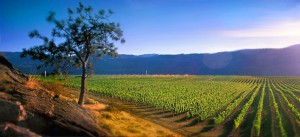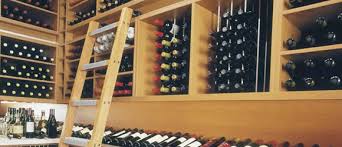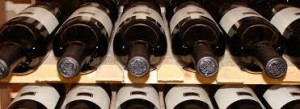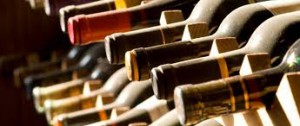La Dolce Vita #2
Where do you buy your wine?
My modest little wine cellar, about 24 square feet, can hold about 600 bottles. It is usually only about half full. At that, it’s still a challenge to manage our consumption so that we aren’t letting wines age past their best drinking time.
The cellar is a simple framed room, built against an un-insulated concrete basement wall, away from where any direct light can get at it. The wood walls are insulated and without any cooling or heating source, it stays at about 65 degrees Fahrenheit or 18 degrees Celsius. That is a bit warmer than the ideal, but I’m not buying $100-plus bottles of wine and it holds the bottles right at the temperature we both prefer for reds. We sometimes, but not always, chill our whites down about 10 degrees, heeding a comment we once heard from a waiter at a sidewalk restaurant near The Vatican.
“North Americans drink their red wines too warm and their white wines too cold,” he said. It’s an observation that I haven’t forgot.

When I go down to the cellar to select a bottle of wine for dinner, I am greeted by mostly BC wines, about 90 per cent of them purchased directly from the winery. The reason for my obsession with buying straight from the producer is stimulated by more words of wisdom, these from our guide when we toured Sumac Ridge Estate Winery more than a decade ago.
“Direct purchases are what allowed us to develop all this,” she said, gesturing to the wine shop, restaurant, winery and barrel cellar, all nestled among landscaped grounds.
 The recent trend to the farmgate purchase of food has plenty of benefits to the consumer. We get to see where our food is grown, talk to the farmer, learn about growing conditions and practices and generally educate ourselves about the stuff we need to survive. But it just might be that those purchases are even more important for the farmer. He or she is getting full dollar for the sale, not paying out portions to truck drivers, wholesalers, retailers and the like. For the farmer, this type of sale might make the difference between a profitable and losing year.
The recent trend to the farmgate purchase of food has plenty of benefits to the consumer. We get to see where our food is grown, talk to the farmer, learn about growing conditions and practices and generally educate ourselves about the stuff we need to survive. But it just might be that those purchases are even more important for the farmer. He or she is getting full dollar for the sale, not paying out portions to truck drivers, wholesalers, retailers and the like. For the farmer, this type of sale might make the difference between a profitable and losing year.
Winery purchases are much the same. The government gets its large cut regardless, but the bulk stays with the producer, who gets his money immediately, too. Buyers don’t usually get a break in price when they make the trip to a winery, but the benefits are similar to those farmgate food purchases.

I’ll use the example of one of our favourite destinations. We fell in love with the wines of D’Angelo Estate Winery, which is located on the Naramata Bench, north of Penticton, on first taste at the wineshop. Owner Sal D’Angelo manages his own vineyards, makes his own wines and is a fountain of knowledge. He likes to talk and I like to listen, so we make a good pair. Over the years, we have come to know Sal quite well, looking forward to our always fascinating chats. We have attended a winemaker’s dinner at his home, over which his mother presided. We have stayed, numerous times, at the winery’s bed and breakfast. We have sampled wines from the barrel and learned more about vines while we stood chatting while Sal worked his pruning shear magic. I have written, many times, about D’Angelo, for my own column and for magazines.
Had we bought D’Angelo wines from a store, we still would have had the pleasure of their handcrafted taste. We would have still known that they were ready to drink, because Sal releases no wines before they are ready to his own satisfaction. We would have missed out on that personal connection, though, and that would have been our loss.
Now, when I bring a bottle of Sal’s wine up from the cellar and pull out the cork, we are immediately transported back to our many happy visits to the winery, and our chats with Sal. To be fair, we might have a very pleasant experience at a wine store—after all, the staff are almost inevitably friendly and knowledgeable. But the opening of a bottle purchased off the shelf wouldn’t be like having a miniature time and travel machine, would it?



